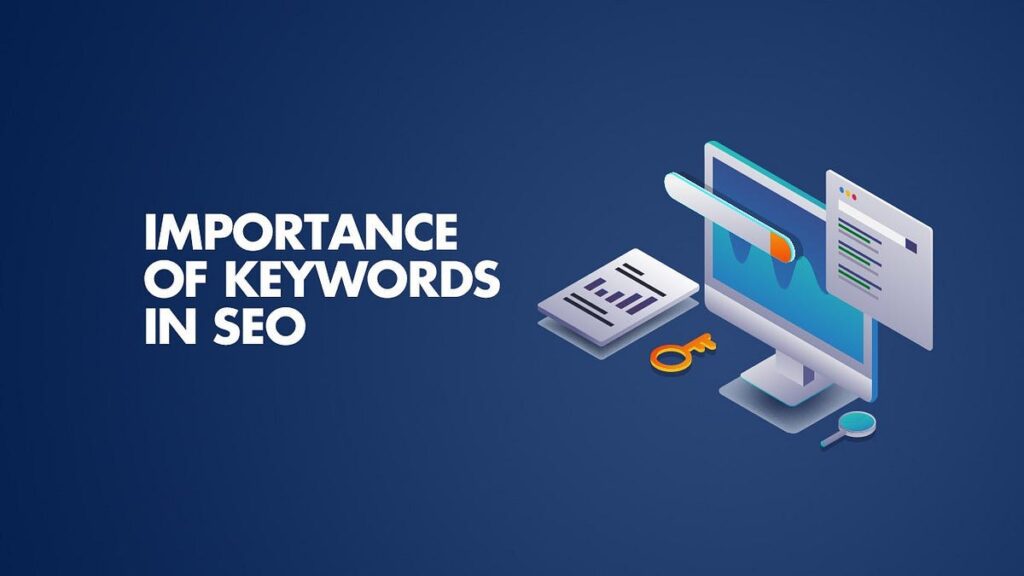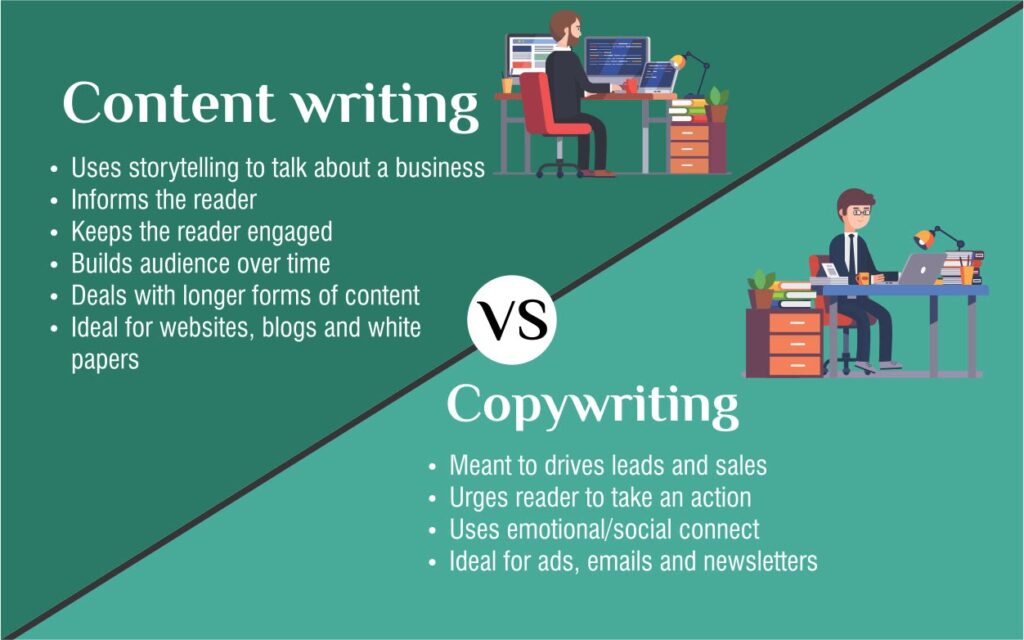Learning how to become a digital writer is not a difficult task. You can work from the comfort of your own home rather than from an office, and the best part is that you can earn more money by learning how to become a digital content writer and developing your own brand of writing techniques.
This blog is all about guidelines for digital writers to help them start their own businesses.
Digital writer
A digital writer creates, edits, and publishes content and copy for a wide range of digital platforms, such as websites, blogs, videos, email marketing campaigns, advertising campaigns, social media marketing, infographics, social media posts, whitepapers, and more. Digital content writers create messaging, marketing materials, and various types of digital online copy that an organization can use to sell or promote services, raise brand awareness, and so on.
How do I get started as a Digital Writer?
There is no single path to becoming a Digital Writer. Having an online portfolio of your work, on the other hand, is an important first step in attracting employers or clients.
However, the question is how to make your portfolio impressive so that clients will pay you for your desired digital earnings. Let us go over this in detail.
Keywords and its type:

Keywords are words or phrases that people lookup in search engines like Google, Bing, Yahoo, and others. People are using these keywords to try to find answers to their problems and meaningful solutions.
Keywords play the main role in content writing in digital marketing. There are generous types of keywords let’s discuss
1) Primary Keywords
The primary keywords are the terms for which you want to rank. These are high-volume search terms that can drive significant traffic to your website. Your primary keywords should be broad in scope and spread throughout the text on your site. You should include your main keywords in the title, headings, anchor links, first and last sentences, and so on.
Primary Keyword Examples
For example, if you are selling laptops online throughout the USA, your keyword list should include the following:
- buy online laptops in the USA
- purchase laptops online in the USA
- laptop stores near me
- buy online laptops in the USA
2) Secondary Keywords
These are supplementary and effective keywords. In other words, they provide support for the primary keywords and provide additional information. These LSI keywords must be used naturally throughout your content to provide value to the reader.
Secondary keywords do not have as much SEO value as primary ones, but using them can still help you outrank your competitors.
Secondary Keyword Examples
If you are selling laptops online in the USA, some of the best secondary keywords you can use are:
- buy Asus laptops
- purchase laptop batteries
- laptop chargers online
- laptop repair services
- the best laptop accessories store
- laptop dealer near me
3) Tertiary keyword (or) LSI Keyword
Your primary keyword is related to LSI (Latent Semantic Indexing) keywords. Many people believe that LSI keywords are synonyms. That, however, is incorrect. Simply LSI keywords are words that are related to the same content.
Tertiary Keyword Examples
- If it finds the words: ‘Facebook’, ‘LinkedIn’, ‘Twitter’, ‘Instagram’, ‘like’, ‘follow’, ‘engagement’, your article is probably about social media.
- It finds the words like: ‘vehicles’, ‘hero Honda’, ‘Yamaha’, ‘Bullet’, ‘Bajaj’, ‘buy’, ‘sell’, ‘repair’, your article is probably about bikes.
- If it finds the words: ‘biryani’, ‘vegetarian’, ‘non-vegetarian’, ‘breakfast’, ‘lunch’, ‘South Indian’, ‘north Indian’, your article is probably about food.
4) Short tail and long-tail keywords:
Short tail keywords are search phrases that contain only one or two words. Because of their length, they are less specific than searches with more words.
The term “short tail keyword” is the inverse of “long-tail keyword,” understanding “long tail” informs what is meant by “short tail.”To learn more about long and short tails read our blogwww.thebloggingbox.com/seo/long-tail-keywords-vs-short-tail-keywords/
Keyword density:

The number of times a keyword appears on a given webpage or within a piece of content as a ratio or percentage of the total word count is referred to as keyword density. This is also known as keyword frequency, or the frequency with which a specific keyword appears on a webpage.
What is a good Keyword Density?
Most SEO experts believe that an ideal keyword density is around 1-2%. This means the target keyword appears about one to two times per 100 words. At this rate, the keyword appears enough times to show search engines what the page is about without engaging in keyword stuffing.
Formula:
Divide the number of times a keyword is used on your page by the total number of words on the page. Multiply this by 100 to get a percentage, which in this case is 1%
Keyword Stuffing

Keyword stuffing is the practice of stuffing as many keywords as possible onto a webpage, often in an unnatural and forced manner for the reader.
In the past, keyword stuffing was used to achieve high search engine rankings and visibility for specific phrases. This method is no longer relevant and adds no value to rankings today. Google, in particular, no longer rewards pages that use this technique with high rankings.
Stuffing keywords into your content will result in a penalty. Instead, use only three to four times a focus keyword and no more than twice a secondary keyword.
Keyword stuffing example
An example of keyword stuffing would be a page attempting to rank for the term “best laptop bag” and using the following copy:“
If you’re looking for the best laptop bag, look no further. Our brand offers the best laptop bag that you could want for business or pleasure. With padding in our liners and a special pocket for your charger, this is the best laptop bag for travel or school.”
Keyword Optimization Guideline
Keyword implementation is another term for keyword optimization. It is the process of researching, analyzing, and selecting the best keywords for your target audience in order to drive traffic to your website from search engines.
Keyword research is the most important part of both paid and organic search; if you choose the wrong keyword for your target audience, you will not get good results even if you do keyword optimization. So, it’s very important for a Digital writer to select the appropriate keyword.
1 – Title Tag
- Your website’s title is essential for both on-page and off-page SEO (Search Engine Optimization).
- Title tags should include keyword phrases that you’re trying to rank for.
- To rank for multiple keywords, use a combination of keywords.
- The length of the title tag is 55-60 characters.
- Each word should be capitalized.
- Keywords can be separated with the help of the symbols | (or): (or) – these.
- The website name should be at the end of the title tag.
2 – Meta Description
- In search results, it displays a summary of the page.
- The length of the Meta description is 155 characters.
- In the description, use target keywords.
- It must conclude with a strong call to action (CTA).
3 – URL
URL (Uniform Resource Locator) is the name of your webpage that is used to identify each page on your website.
- Use target keywords in the URL.
- Create the URL based on the site’s hierarchy.
- A distinct keyword is denoted by a “–” symbol.
- Avoid utilizing multiple levels in the URL.
- Don’t use capital letters in the URL.
4 – Header tags
There are six different types of header tags:
- H1 Tag: Use the H1 tag for your page title and include your primary keyword. Use no more than one H1 tag on a single page.
- H2 Tag: H2 tags are used for main headings (for example chapter names). Use multiple H2 tags on a single page, and try to include your secondary and LSI keywords in the H2 tag.
- H3 Tag: The H3 tag appears Below an H2 tag. H3 tags are used for the sub-headings, and multiple H3 tags are used on a single page.
- H4 to H6: The H4 to H6 tags are coming under the H3 tag and the sub-sub-headings are the H4 to H6 tags. You can use an N number of times.
5- Image Optimization:
- Every page should have at least one image.
- Use ALT+X for all the images.
- Use the name of the image target keywords
Copywriting vs Content writing

Copywriting is a synonym for “marketing writing.” It refers to text that is used in some way to market a product. When someone writes copy, they are creating the text for an advertisement, website, brochure, catalog, direct mail piece, tagline, white paper, social media post, PPC landing pages, PPC ads, Cost-per-mille (CPM) ads, Social media ads, Product pages or any other marketing communication.
The creation of text content to educate or entertain readers is referred to as content writing. It may also drive sales, but that is not its primary goal. When you write content, you want to educate or entertain readers with high-quality and valuable content.
Blog posts, video or podcast scripts, e-books or whitepapers, press releases, product category descriptions, landing pages, or social media copy are all examples of content writing in digital marketing.
Any piece of high-quality content, whether created by digital writing or copywriting, can rank high in search results if it is relevant to a search query.
There is a fine line between content writing and copywriting. Content writing in digital marketing is all about educating or entertaining, whereas copywriting is all about persuading. When creating organic website content, you will typically perform content writing. In comparison, you’ll write copy when creating paid ads and other sponsored text content.
How to create content that is markable?
Avoid the temptation to sell something as a first step. Content marketing is largely based on the idea that people prefer to buy from people and brands they trust. And one of the best ways to win over a customer is to provide value to others without expecting anything in return.
1) Write a compelling headline:
Your content’s headline accomplishes three things. In order for Google to give it a high search rank, it must capture readers’ attention, accurately summarise the information, and meet search guidelines.
2) Make your content easy to read:
You must format your online content in such a way that it can be easily scanned and understood by both readers and Google. Online, reading long pages of text can be difficult, especially on small smartphone screens. Rather than plowing through a long article, online readers scan content to find points that they are interested in.
3) Focus on the topic, not keyword stuffing
With a few key differences, the basic rules of content writing are similar to the writing guidelines you learned in school. Keywords are necessary, but you should focus on producing well-written, high-quality content that explains the topic clearly.
4) Word count matters
Longer content is rewarded with a higher search rank as a general rule. Content should be at least 1000 words long and typically between 1500 and 2500 words long in order to achieve the highest search ranking.
5) Proof your content
Proofreading your content may seem like an afterthought in these beginner content writing tips, but the internet is littered with blogs and other content that are riddled with grammar and spelling errors. Poorly-proofed content can harm your company’s image because it represents your business online and maybe a potential customer’s first contact with your brand.
Practice, practice, practice!
Writing content is similar to any other skill in that the more you practice it, the easier it becomes. To become a pro digital writer you can find free tools that will analyze your content and advise you on improving your content writing skills on the internet. One of our favorites is the Hemmingway app, which provides tips on how to improve your writing by making it shorter, clearer, and easier to understand.
Bloggingbox can take care of your content writing needs if you’d rather concentrate on running your company. We can provide high-volume content writing services, analytics, distribution services, and more as a full-service interactive marketing agency, giving you everything you need for a successful content marketing strategy.


